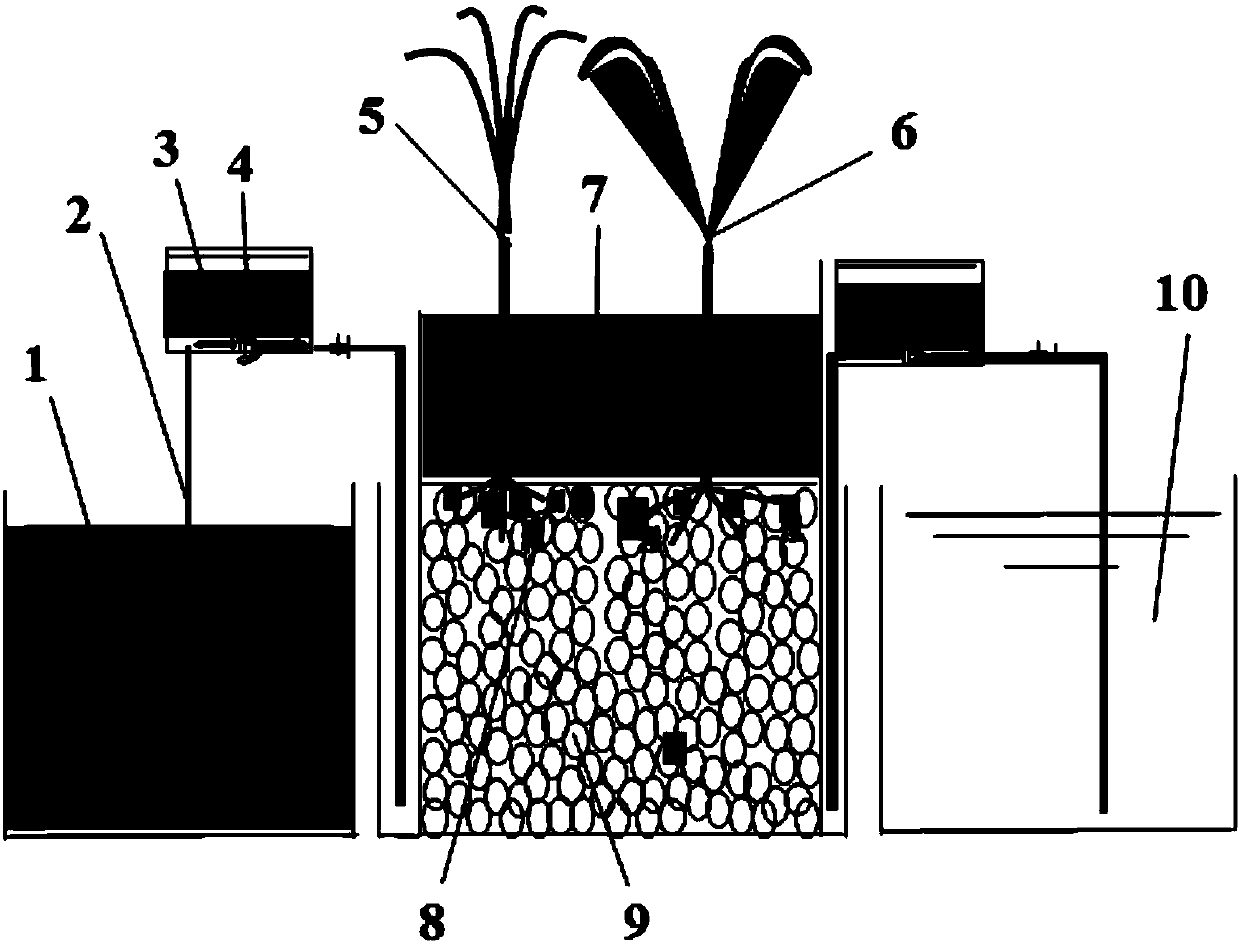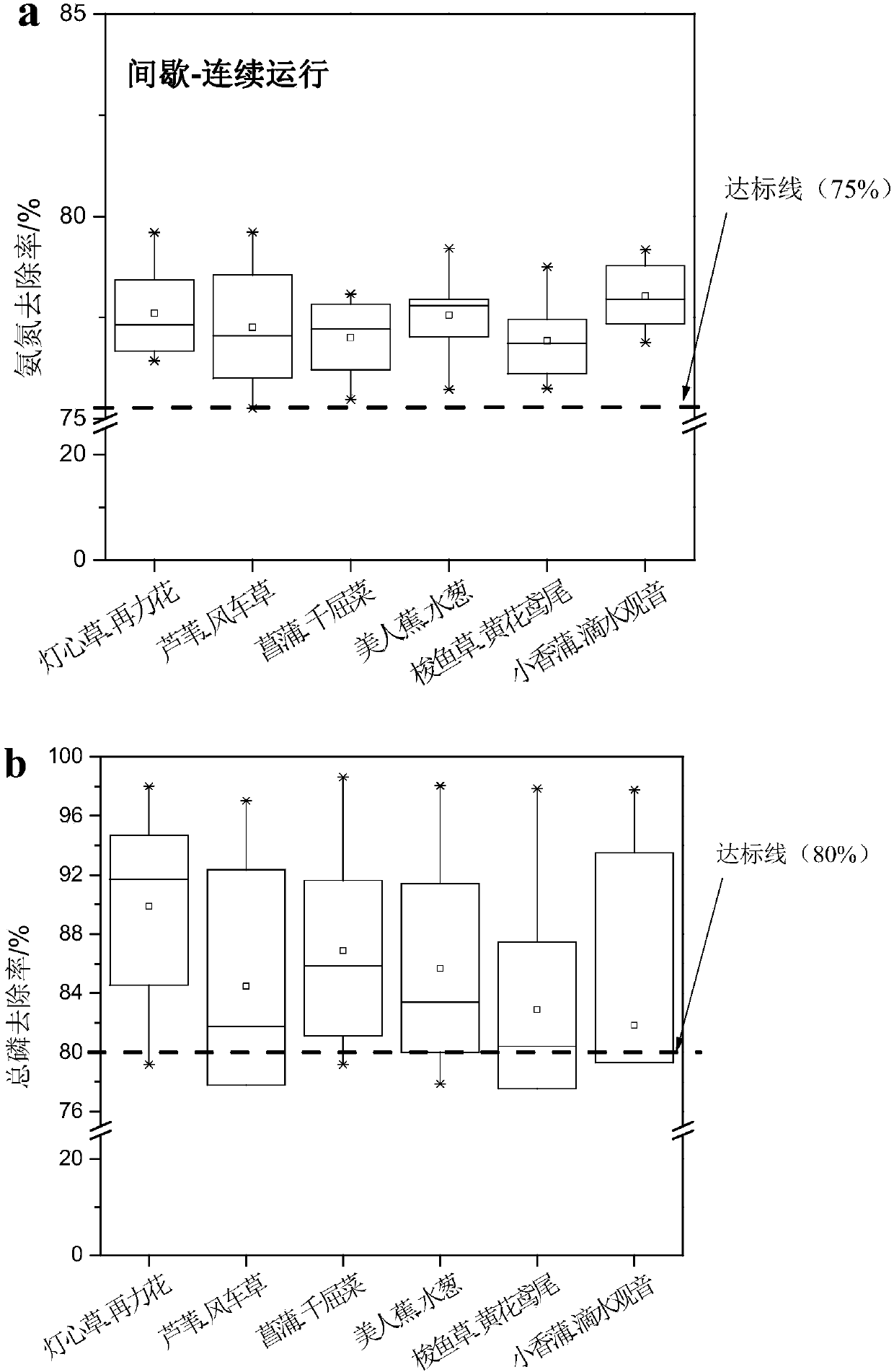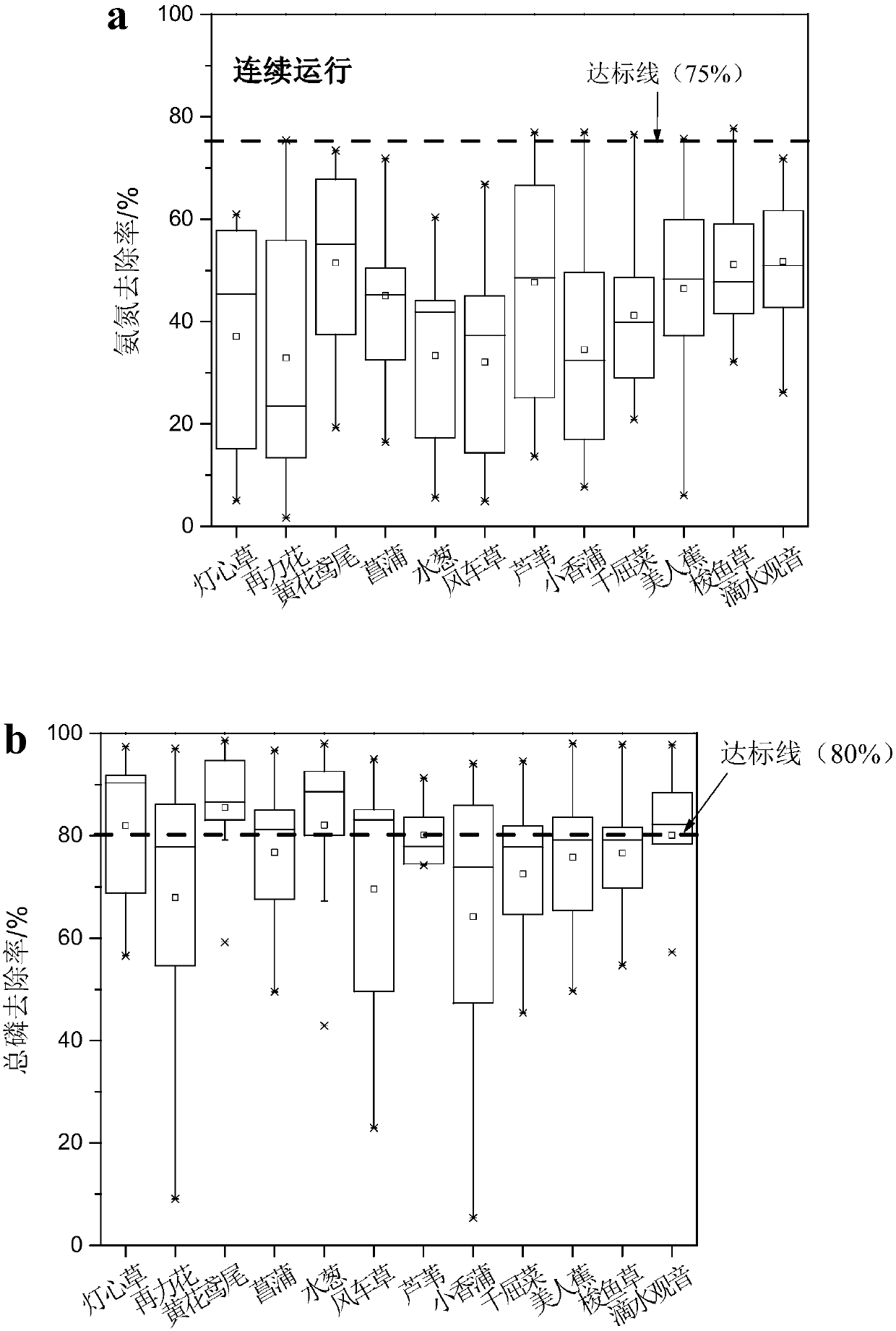Underflow constructed wetland ecological system for disposing rural domestic waste and disposing method
A technology for constructed wetlands and domestic sewage, applied in biological treatment devices, chemical instruments and methods, biological water/sewage treatment, etc. The effect of faster builds, lower costs, optimized operation
- Summary
- Abstract
- Description
- Claims
- Application Information
AI Technical Summary
Problems solved by technology
Method used
Image
Examples
Embodiment 1
[0024] Take domestic sewage, mix it with clean water according to the volume ratio of 1:4, and cultivate ungerminated canna seeds as a culture medium. When the root length reaches about 10cm, rinse the canna roots to make the root microorganisms disperse in the culture medium, and the OD of the culture medium 600nm = 0.2; filter with a 0.22 μm filter membrane, take the filter membrane in the DNA extraction kit ( DNAIsolationKit), the extracted DNA product is first used for sample amplification. The PCR primers used the V3-V4 general primers of the Miseq sequencing platform: F primer 5'-ACTCCTACGGGAGGCAGCAG-3' and R primer: 5'-GGACTACHVGGGTWTCTAAT-3'; the library was diluted to a certain concentration according to the requirements of the machine, and sequenced by Miseq.
[0025] The test results showed that Alcaligenes (27%), Flavobacterium (29%), Lysobacterium (30%) and Pseudomonas (13%) were dominant bacteria in canna root system, and dioxygenase , dehydrogenase, phosphate ...
Embodiment 2
[0027] Take domestic sewage, mix it with clear water according to the volume ratio of 3:4, and cultivate ungerminated canna seeds as a culture medium. When the root length reaches about 10cm, rinse the canna roots so that the root microorganisms are dispersed in the culture medium, and the OD of the culture medium 600nm =0.6; filter with a 0.22 μm filter membrane, take the filter membrane in the DNA extraction kit ( DNAIsolationKit), the extracted DNA product is first used for sample amplification. The PCR primers used the V3-V4 general primers of the Miseq sequencing platform: F primer 5'-ACTCCTACGGGAGGCAGCAG-3' and R primer: 5'-GGACTACHVGGGTWTCTAAT-3'; the library was diluted to a certain concentration according to the requirements of the machine, and sequenced by Miseq.
[0028] The test results showed that Alcaligenes (30%), Flavobacterium (25%), Lysobacterium (28%) and Pseudomonas (16%) were dominant bacteria in canna root system, and dioxygenase , dehydrogenase, phosph...
Embodiment 3
[0030] Step 1. Domestic sewage is mixed with clean water at a volume ratio of 1:2 to cultivate ungerminated canna seeds. When the root length reaches about 10 cm, rinse the roots of canna to disperse the root microorganisms in the culture solution. The OD of the culture solution 600nm =0.4;
[0031] Step 2, the OD 600nm =0.4 culture medium according to 1L / m 3 Mixed evenly into the soil and gravel respectively to form the wetland matrix;
[0032] Step 3. Put the gravel and soil in step 2 into the artificial wetland pool according to the volume ratio of 4:1, the soil is attached to the gravel, and the soil thickness is less than 1 meter; then according to 6 plants / m 2 The planting density of two kinds of wetland plants is cross-planted; such as figure 2 As shown, the two kinds of wetland plants cross-planted are rushes and reeds, reeds and windmills, calamus and quinces, canna and water onions, pike grass and yellow iris, small cattails and dripping Guanyin.
[0033] Step 4...
PUM
| Property | Measurement | Unit |
|---|---|---|
| Length | aaaaa | aaaaa |
Abstract
Description
Claims
Application Information
 Login to View More
Login to View More - R&D
- Intellectual Property
- Life Sciences
- Materials
- Tech Scout
- Unparalleled Data Quality
- Higher Quality Content
- 60% Fewer Hallucinations
Browse by: Latest US Patents, China's latest patents, Technical Efficacy Thesaurus, Application Domain, Technology Topic, Popular Technical Reports.
© 2025 PatSnap. All rights reserved.Legal|Privacy policy|Modern Slavery Act Transparency Statement|Sitemap|About US| Contact US: help@patsnap.com



